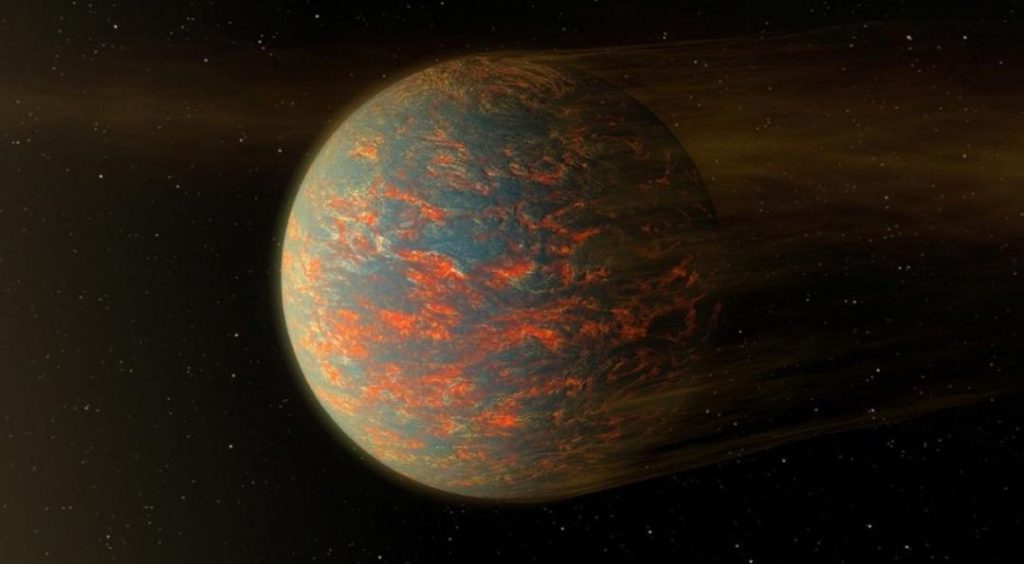
Newly-Discovered Super-Earth Heats Up & Freezes Every 300 Days
The search for life beyond our planet has led to numerous groundbreaking discoveries in recent years. The latest addition to this list is a newly-discovered “super-Earth” that is orbiting a Sun-like star just 20 light-years from Earth. What makes this discovery particularly fascinating is the extreme climate fluctuations it experiences, with temperatures soaring to scorching highs and plummeting to freezing lows – all within a span of approximately 300 days.
A planet classified as a “super-Earth” is one that is larger than our own Earth but smaller than the gas giants like Neptune and Uranus. This newly-discovered world, dubbed Kepler-1649c, falls into this category, making it a significant find in the field of exoplanetary research.
Orbiting a Sun-like Star
Kepler-1649c is orbiting a G-type main-sequence star, also known as a Sun-like star. This means that the planet receives a similar amount of sunlight as our own Earth, which is crucial for life as we know it. The star, Kepler-1649, is slightly smaller and cooler than our Sun, but it still provides the necessary energy for life to thrive on its planets.
Extreme Climate Fluctuations
The most striking feature of Kepler-1649c is its highly eccentric orbit, which takes it extremely close to its star and then farther away. This results in two distinct climate zones: a scorching hot region near the star and a frozen, cold region at the farthest point.
For the first part of its year, Kepler-1649c is in close proximity to its star, receiving intense heat and radiation. This causes the surface temperature to soar to as high as 3,000°F (1,600°C), making it hotter than the surface of Mercury, which is closest to the Sun. The extreme heat would likely lead to the formation of a thick atmosphere, which would help to trap heat and create a runaway greenhouse effect.
However, as the planet moves farther away from its star, it enters a region where the temperature plummets to as low as -200°F (-129°C). This is colder than the surface of Neptune, the eighth planet from our Sun. The extreme cold would lead to the formation of vast ice sheets and glaciers, making it inhospitable for life as we know it.
Implications for Life
The discovery of Kepler-1649c raises questions about the possibility of life on this planet. While the extreme climate fluctuations might make it difficult for life to thrive, microorganisms have been known to adapt to some of the most inhospitable environments on Earth. It’s possible that life could exist in the form of hardy, extremophilic organisms that are capable of surviving in both the hot and cold regions.
Furthermore, the planet’s unique environment could also lead to the evolution of unique life forms that are adapted to these extreme conditions. For example, organisms that can survive in the hot region might have developed specialized heat-resistant mechanisms, while those that thrive in the cold region might have adapted to the extreme cold.
Future Research Directions
The discovery of Kepler-1649c opens up new avenues for research in the fields of exoplanetary science and astrobiology. Scientists will likely focus on studying the planet’s atmosphere and surface composition to better understand the mechanisms that drive its extreme climate fluctuations. Additionally, the search for signs of life on this planet will be a major area of focus, as it could provide valuable insights into the possibility of life existing on other planets with similar conditions.
Conclusion
The discovery of Kepler-1649c, a super-Earth that heats up and freezes every 300 days, is a significant find in the field of exoplanetary research. Its unique environment offers a glimpse into the extreme conditions that might exist on other planets, and it raises questions about the possibility of life existing in such environments. As scientists continue to study this fascinating planet, we may uncover new insights into the possibility of life beyond our planet and the conditions necessary for life to thrive.
Source:






